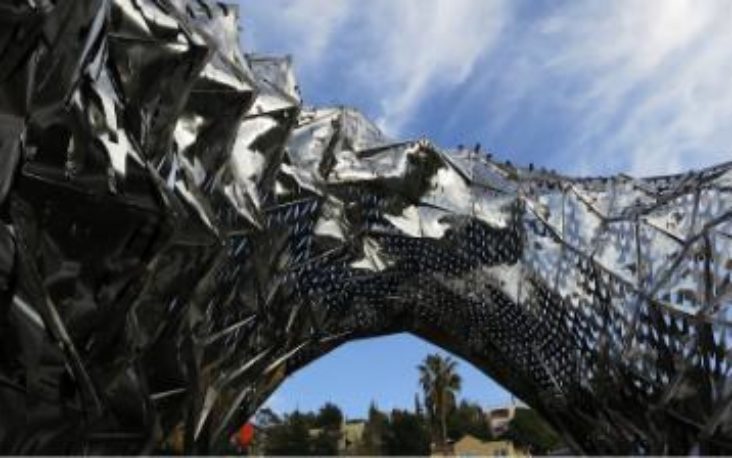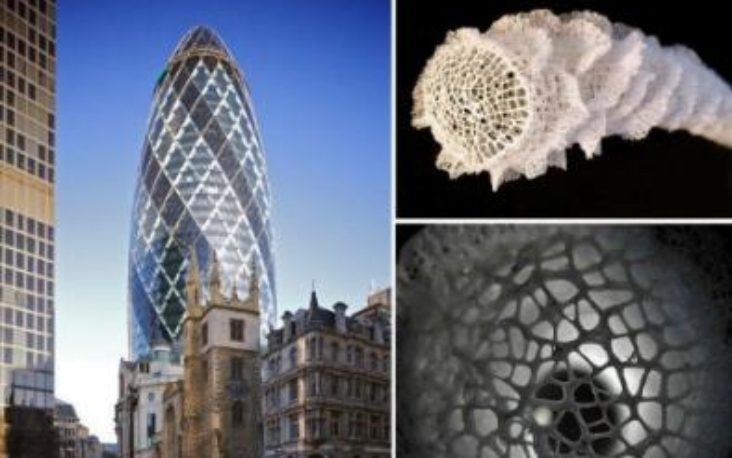Buildings that breathe

You have been given the task to research the effects of airflow in and around buildings within a city environment. From your research, try to make a prototype for a new building concept which encourages natural air flow throughout the structure and takes a more sustainable approach to air conditioning.
INTRODUCTION
You are encouraged to build a prototype building structure that answers the brief. First look through the various resources to find your own direction
WHAT YOU'LL NEED
Access to internet, scissors, masking tape, craft knives, metal rulers, cutting boards (to cut on using craft knives) Spaghetti, Rubber sheet, tights, A4 paper, Lego blocks, battery powered hand-fan, plastic tubing cardboard, wooden dowel, metal rod, small saw for cutting dowel, wire cutters for rod, pliers, cutting board, thin wooden dowel, string or fishing wire, paper or plastic straws, craft knives & scissors, glue guns -it really is up to you
QUESTIONS TO THINK ABOUT
How can a building be environmentally damaging? Can you name other examples of how buildings can become ‘greener’? Why is Bio-mimicry important in design?
EXAMPLES
1ST EXAMPLE: THE GHERKIN
The Gherkin and Venus basket sponge pictured to show a real-life example and inspiration of the proposed problem.
“Although more often likened to a vegetable, the famous 180m high Gherkin tower in London (30 St Mary Axe) was actually inspired by a curious marine animal known as Venus’s flower basket sea sponge. The external scaffold of the Gherkin mimics the lattice arrangement of E. aspergillum. The curved sides allow winds to pass easily around the building, rather than being deflected down to street level to blast pedestrians.
Because more air can flow around the side of a cylinder than the corner of a rectangle, its speed increases, causing a higher negative air potential at the back of the building. Architects Foster & Partners used this to drive a natural ventilation system. Large vents at street level suck in air and funnel it upwards throughout the building, reducing the need for air conditioning by 50%.”

2ND EXAMPLE: DORIS SUNG ARCHITECTURE
Architecture Inspired by Biology: Doris Sung has spent the past few years designing dynamic, “breathable” exteriors that can regulate the temperature in buildings the way human skin regulates body temperature — consuming zero energy and requiring no switches or other controls.
Step 1
Look through the information provided about The Gherkin (1st example)
Step 2
Follow this with an introduction to Doris Sung Architecture (2nd example)
Step 3
Then choose two topic areas within the additional Group Research Areas below:
- Anatomy and biology i.e. lungs, blood flow, plant roots
- Air flow, wind patterns
- Fish gills, ocean bottom feeders and coral
Step 4
You are then encouraged to spend further time completing your own research or you could choose to research any of these examples further.
Step 5
You should then come up with a range of sketched ideas that are, in some way, inspired from your two chosen Group Research Areas or from examples 1 and 2.
Expert tip: try to repeat some of the inspiring aspects
Step 6
To take your design further, start to experiment with either one or all of the following:
- The exterior building structures
- The interior building structures
- Building airflow
Step 7
Choose a favourite concept(s) to take forward.
Step 8
Begin making prototype(s) and or concepts models. This doesn’t have to be a finished working model. It could be a collection of small prototypes that help explain the idea. Models can be presented along with sketches.
Expert tip: Be as creative as you can with your materials. There are no rules!
Step 9
Once finished, could you test your design in some way with real air flow of some kind?
IMPORTANT SAFETY NOTES
CRAFT KNIVES
- Only cut straight line cuts with a craft knife
- Use scissors for curved lines
- Material (card) held firmly on a cutting board whilst cutting
- Use a metal rule for knife guidance and cut towards body
- Cut material over several tries as opposed to trying just one cut
- Try small cuts as opposed to long large cuts
SAFE USE OF HOT GLUE GUN
- Before use, check for damage to the gun’s casing and fraying to the electrical cord and plug.
- Always wear protective clothing: overalls or long sleeve shirts, closed-toe shoes, heat resistant gloves, and safety glasses or goggles. Keep long hair tied back.
- Make sure the work area is clean, dry, and clear of flammable materials and loose cables.
- Never lay a hot glue gun on its side. Store the glue gun in a safety stand. Stands are usually wire or metal – each glue gun can require a different stand.
- Always use a drip mat. This will help to catch hot glue drips and prevent damage to underlying surfaces.
- Do not touch the heated nozzle of a hot glue gun, unless you’re removing it from the applicator. Always wear protective gloves for this.
- Never tilt a hot glue gun upwards – or for gluing overhead items.
- Never remove a part melted glue slug/stick through the back of the gun.
- Never leave a hot glue gun unattended, especially while plugged in. Unplug the glue gun if you’re not going to use it for over 40 minutes.
ACTIVITY REFLECTION
What went well? What didn’t go so well? What would you do differently next time?
We’d love to see the outcome of your design – send pictures to outreach@tedi-london.ac.uk
